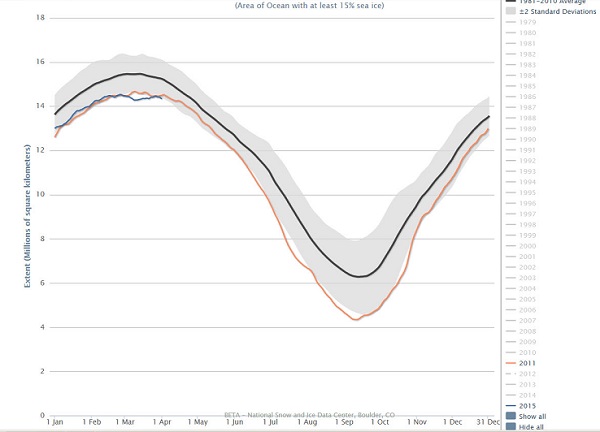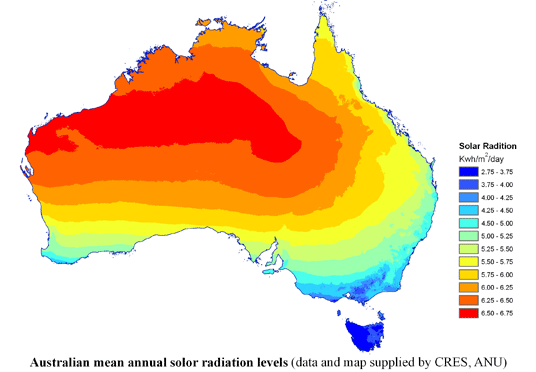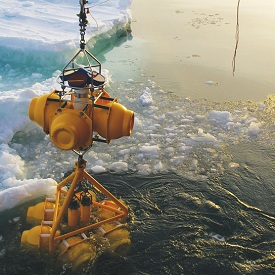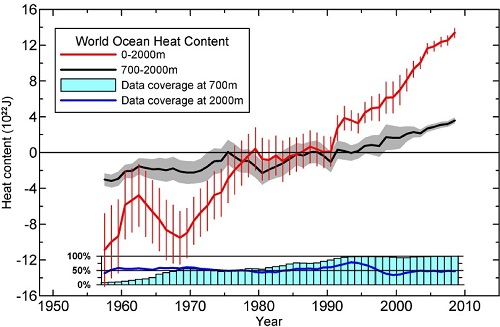Every year climbers of Mt Everest leave behind 26,500 pounds of poo. I make that about 12 tonnes.
Sherpas pick it up, bring it down in blue barrels, dig a hole and dump it. Now the proposal is to build an anaerobic digester in a small village near Everest’s base to create biogas to produce power. Apparently human poo is not the best, but it works.
2. Arctic sea ice record
I think it’s time to call it. The Arctic sea ice winter maximum is the lowest on record. This graph shows 2015 ice against the previous record of 2011 and the 1981-2010 average:

Also the maximum extent was reached on February 25, the second earliest on record.
According to a recent survey, thinning has been quite dramatic:
… annual mean ice thickness has decreased from 3.59 meters [11.8 feet] in 1975 to 1.25 m [4.1 feet] in 2012, a 65% reduction. This is nearly double the 36% decline reported by an earlier study….
In September the mean ice thickness has declined from 3.01 to 0.44 m [from 9.9 to 1.4 feet!], an 85 % decline.
Climate Central has a graphic showing the loss of ‘old’ ice. In 1987 it used to be 26% of the ice pack, now it’s down to 10%.
Polar bears will struggle to adapt.
3. Shell looks to drill in Arctic
Shell hopes to drill in the Chukchi Sea in the Arctic this summer. It looks as though Obama’s Department of the Interior will allow it, even though an Environmental Impact Report released by the Bureau of Ocean Energy Management (BOEM) noted a 75% chance of one or more large spills occurring under the current plan. In 1989 the Exxon Valdez disaster spilled nearly 11 million gallons of crude oil into the Alaskan Gulf, polluting over 1300 miles of coastline. It is estimated that only 14% of the oil was cleaned up.
By comparison BP’s Deepwater Horizon oil rig spilled 168 million gallons of oil into the Gulf of Mexico off the Louisiana coast.
Yet Obama himself stresses the need to move early on climate change. More than half of Republican politicians deny or question the science. Voter pressue will change that eventually.
A recent Stanford University poll found that two-thirds of voters were more likely to vote for a candidate that campaigned on a platform of fighting climate change, and were less likely to vote for a candidate that outright denies climate change.
4. Land, ocean carbon sinks are weakening
We are destroying nature’s ability to help us stave off catastrophic climate change. That’s the bombshell conclusion of an under-reported 2014 study, “The declining uptake rate of atmospheric CO2 by land and ocean sinks,”…
Based on actual observations and measurements, the world’s top carbon-cycle experts have determined that the land and ocean are becoming steadily less effective at removing excess carbon dioxide from the atmosphere. This makes it more urgent for us to start cutting carbon pollution ASAP, since it will become progressively harder and harder for us to do so effectively in the coming decades.
Joe Romm calls the study “one of the most consequential recent findings by climatologists”
More than half of emissions are currently absorbed by land and ocean-based carbon sinks. Increasingly these emissions will stay in the air.
5. Reasons the Australian solar market is so interesting
Clean Technica has found 7 reasons the Australian solar market is so interesting republished at RenewEconomy.
One reason is that we have so much sunlight, as shown below:

However, most of us live in the more cloudy parts in big cities and along the south-east edge. A commenter pointed out that for insolation Ney York lies between Melbourne and Sydney.
A second reason is that we are enthusiastic about roof-top solar, with over 20% of houses now with panels installed.
A third is that, along with Germany, Italy and The Netherlands, we reached socket (aka grid) parity in 2013.




